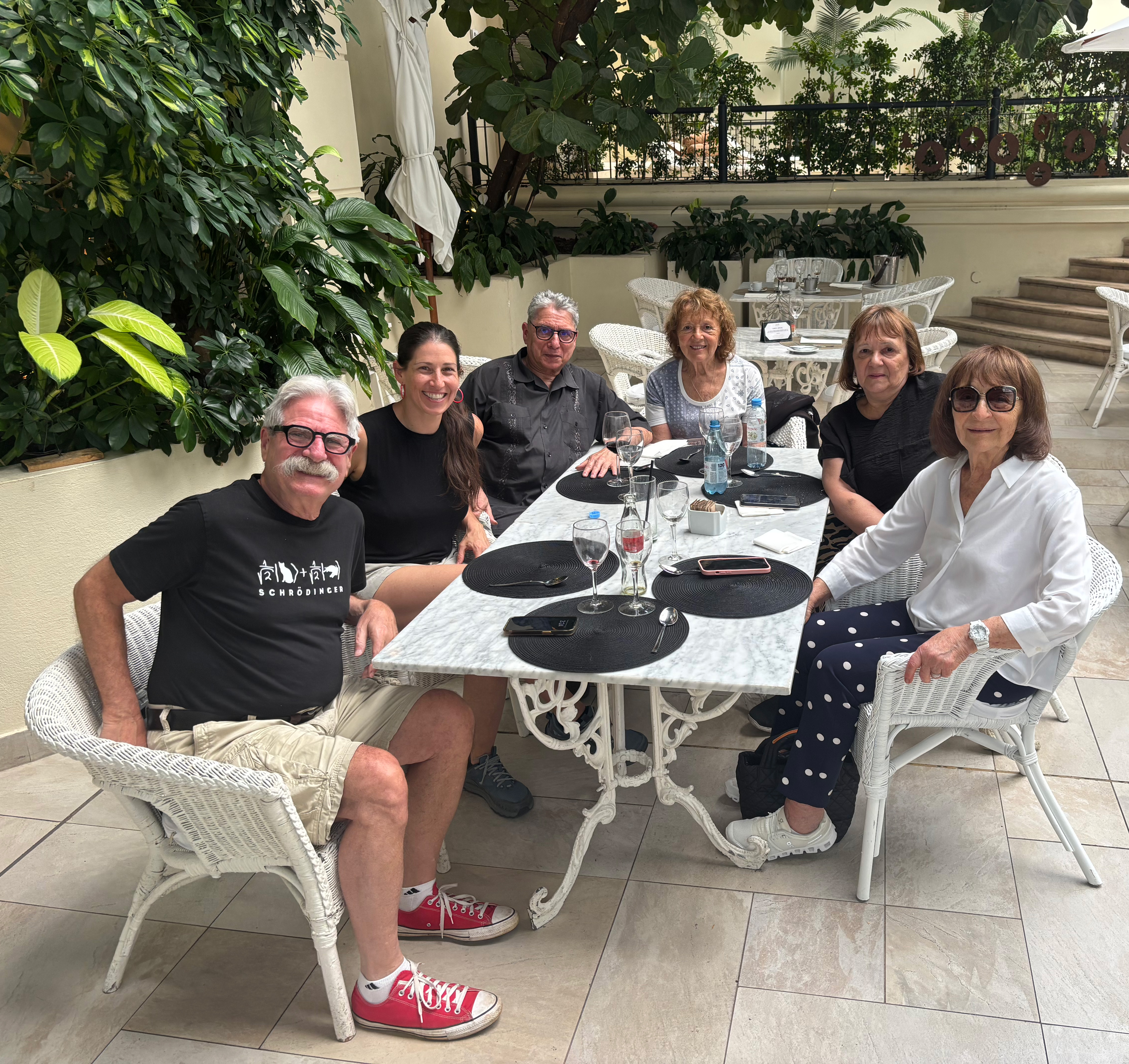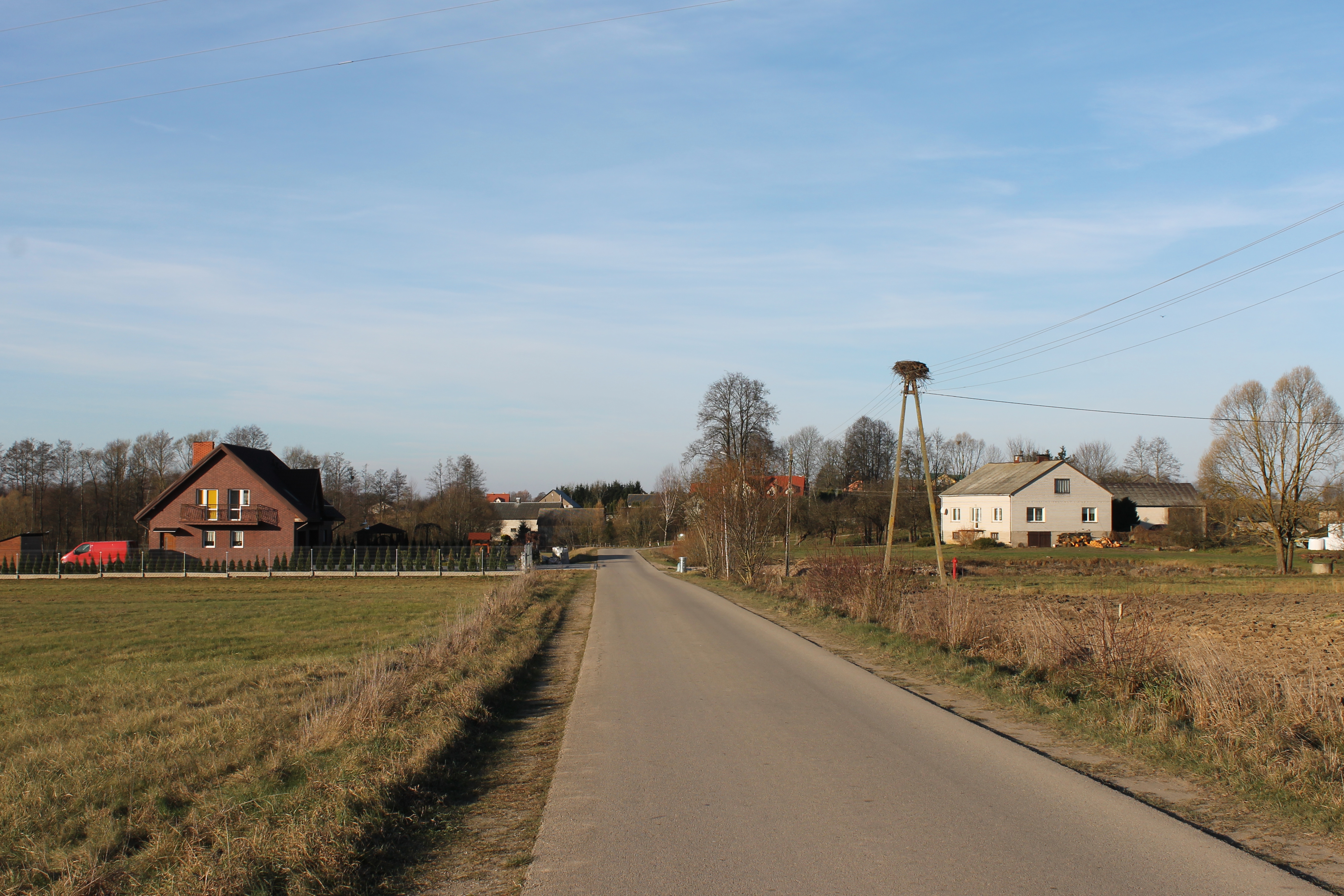Posts

Reunification of the family in Argentina
TheSapoczkowski familyis reunited after more than 120 years, thanks to the combinedresearch efforts of Daniel Paczkowski (Ancestral Tourism in Poland)and the Asociación Mutual Israelita Argentina (AMIA). In March 2020Daniel’s skilled archival sleuthingled us to South America, where we discovered second-degree relativesalive and well in Buenos Aires, Argentina. Sundry travel documentsrevealed Nison Sapockowski (b. 1916), my mother's first cousin, fledBialystok in 1936, anticipating the unspeakable historical eventsthat were to follow. Nison left behind a largeextended family, whose fate rested entirely in the hands of Nazis andNazi collaborators. To the best of our knowledge, all perished by1943.


Problematic research case in Pohost Zarzeczny (Polesye)
I had a very problematicresearch case last year. The purpose was to find the birth record ofMichał Zielinski, son of Aleksander and Helena, born in December1915 in Pohost Zarzeczny. According to the information provided,Michał was baptized in the Roman-Catholic church. You could ask: whywas it so problematic? It should be very easy to identify the rightparish church and then to locate the birth records from the 1915-1916time period. But no, it was not so easy.
Pohost Zarzeczny is avillage, which is placed in Ukraine, Rovne District today. BeforeJanuary Uprising of 1863 it belonged to the Roman-Catholic parishchurch in Horodyszcze (today in Belarus). There was a filial chapelin Pohost Zarzeczny, but it is not clear if the metric books wereconducted in Pohost Zarzeczny or in Horodyszcze only. Due torepressions introduced by Tsar after January Uprising of 1863, parishchurch in Horodyszcze was closed and it was reopened just in 1910,after more than 40 years. So, logically, the birth record of MichałZieliński had to be registered in Horodyszcze parish birth recordsbook in 1915 or 1916.
But historical backgroundhad to be taken to account as well. There was an assault of GermanArmy against Russian army in August 1915. Horodyszcze was cut offfrom Pohost Zarzeczny by the front line. Moreover, about 1-3 millionspeople were evacuated to the East before approaching German Armyincluding administration employees, factory laborers, priests. WereMichał's parents among refugees leaving Pohost Zarzeczny? Or didthey stay? These questions were important, while determining wherethe birth record of Michał Zieliński may have been registered.
National HistoricalArchive of Belarus in Minsk kept following birth records of thesurrounding parishes:
Pińsk 1915-1916,
Łuniniec 1915,
Łachwa 1914-1915,
Łunin 1915-1918,
Horodyszcze 1915-1918.
All of them wereexamined, but the birth record of Michał Zieliński was not found.
There was one more parishworth examining: Lubieszów, but I was not able to find birth recordsof this parish for the 1915 and 1916 years.
***
This seemed the dead end,but then I received information from my friend that Fiodor Zieliński,born in 1903 in Pohost Zarzeczny, son of Aleksander, lived in Pinskbefore WWII. He was of Orthodox religion. This was enough for me toconsider checking the Orthodox parish records, where Pohost Zarzecznybelonged to.
It was much easier withOrthodox parishes. Pohost Zarzeczy belonged to the Orthodox parish inMurowin. Vital records of the Orthodox parish in Murowin are kept bythe Regional Archive in Rovne and the birth record of MichałZieliński was found there.
Sometimes, simple thingsprove to be complicated, but the solution comes in the mostunexpected moment!

Displaced village Białe in Wigry parish
This article describes very untypical on-site research, I had an opportunity to pursue at the end of last year. At the beginning I received the Research Report from the customer, prepared by another researcher. This report summarized information found in vital records of Sejny, Suwałki and Wigry parishes in the time period 1808-1885. These parishes are placed in north-eastern part of contemporary Poland, while in the XIX century they were part of the Congress Poland under Russian control. Information found by my predecessor was that Piotr Pietrewicz and Urszula Urbanowicz lived in Białe village, Wigry parish where two their daughters were born: Apolonia in 1882 and Anna in 1885. My task was to drive to Białe, try to find their descendants, gravestones at the cemetery and provide my client with the photographic and video documentation. I am not going to provide all the details of my on-site research itself, although it was interesting and let me find new information. The time spent on preparation led me to fascinating discoveries, without which my trip to Białe would not bring positive results at all and I would like to focus on them.
First,I checked the Geneteka web site. I wanted to check it there are any records of Pietrewicz family, which were not included by the report received. I found one. This was the marriage record of Weronika Pietrewicz, daughter of Piotr and Urszula, born in 1916 with Antoni Sieńkowski. The marriage was concluded in the St. Aleksander parish in Suwałki. What astonished me was the place of living of Weronika Pietrewicz. It was Białe village in Suwałki parish.Impossible, I thought at the first turn. Białe village belonged to Wigry parish in 1880s and there should not be any reason to list it as part of Suwałki parish in 1916. In most cases the marriage was concluded in the parish of the bride. It was not understandable, why it was concluded in Suwałki parish, while Weronika was from Białe village. I considered that Weronika lived in Suwałki in 1916 and the priest registering her marriage in 1916 forgot to write it in the marriage record. This was the option I was ready to accept.
But then I was not able to find existing Białe village near Wigry on Google Maps. There was one Białe placed in the middle of the distance between Suwałki and Raczki near Żyliny village, but it was too far away from Wigry to be the part of this parish.
I turned to check book in my home library. One seemed to be the right: Tomasz Naruszewicz „Wsie gminy Suwałki”, Suwałki, 2018 (eng. Villages of Suwałki community). The author researched and gathered together every small pieces of information in regard to history of each particular village in gmina Suwałki. Gmina can be referred to English term "community". In regard to Białe village following paragraph brought my attention:
„According to Irena Batura, ancestors of contemporary residents of Białe village, relocated to Żyliny area at the end of the XIX century. The reason for that was that farming near Wigry lake was tough. Tsar gave his permission for this resettlement. There is a tradition, according to which, former villages are named „old”, while the villages, where people live today are named „new”. According to oral tradition crops in the „old” Białe village were permanently damaged by strong winds and hail. Local priest sent the petition to tsar requested by residents. The year 1890 is mentioned as a date of relocation. In 1902 Białe village had been already placed in Kuków community upon Szczeberka river. The village comprised of 20 houses and 96 residents. Establishment of Białe village near Żyliny was confirmed by Stanisław Cieślukowski as well.”
This was a revelation for me! Białe found on Google Maps in a distance of nearly 30 km from Wigry was the village I had to drive to.
The rest is a history... I would like to add that thanks to the visit to Żyliny parish archive I was able to locate the gravestone of Urszula Pietrewicz born Urbanowicz at the Żyliny parish cemetery.
